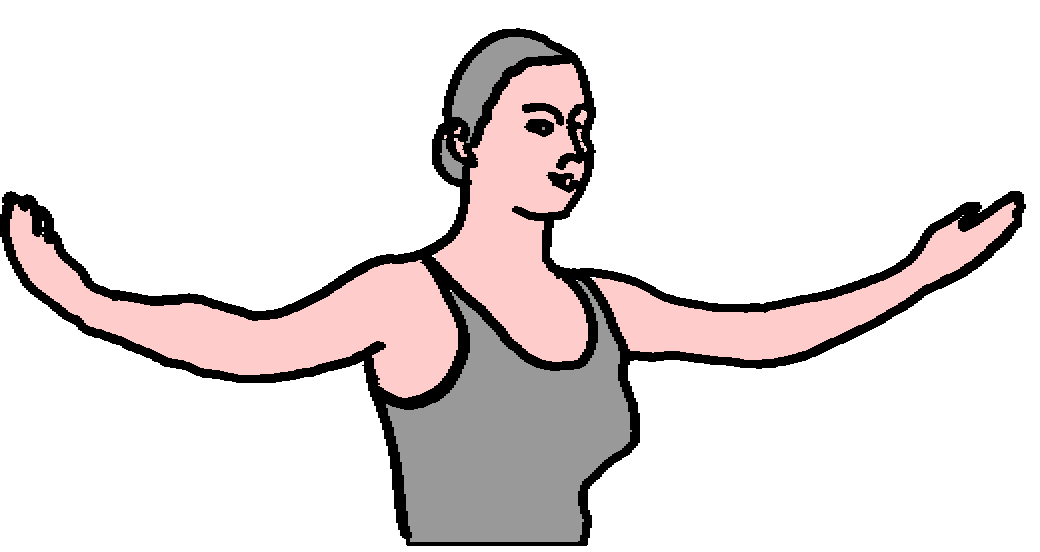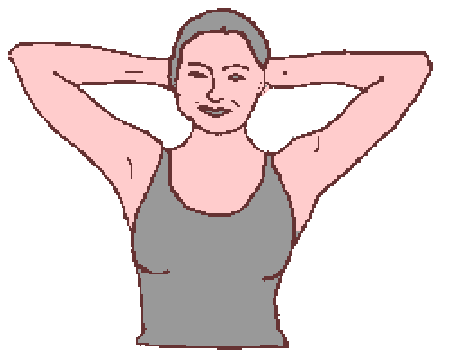|
|
|---|
The Cork Screw:- Start Position
- Stand correctly.
- Apply the scapular anchor.
The Cork Screw:- Action
- Breathe in and lengthen up through the spine. Zip and hollow
- (Breathing out): float your arms up like the wings of an eagle until they
come to rest behind your head.
- (Breathing in): Shrug your shoulders up to your ears.
- (Breathing out): Drop your shoulders back down.
- (Breathing in): Gently bring your shoulder blades together. Your elbows will go back,
but not out of sight.
- (Breathing out): Float your arms back down (like an eagles wings in reverse).
Let your head and neck lengthen up as your arms go down (like the cork out of a bottle!).
- Repeat three to five times.
(Scroll right>>>>....)
|
The Cork Screw:
|
Start Position
 |
Action

|
|
Comments
- It's called the corkscrew because the last part feels like a cork being cork-screwed
out of a bottle!
- This is a great exercise to do if you have been desk bound for some time, or
you have been carrying a lot of shoulder tension.
It is a little complicated, but worth getting right.
|
|
What it does
- Works the muscles that run between the torso and the shoulder blade.
- Encourages the Scapula to move in correct ratio with the humerus (the "scapulo-humeral rhythm"[1]).
- (Assuming you are applying your scapular anchor): Specifically works two muscles that are
very commonly weak and elongated beyond their ideal functional length.
These muscles are the Lower Trapezius and the Serratus anterior(1).
Watch Points
- Do not arch your back as you bring your scapulas together.
- (Except for the moment of the shrug), do your best to maintain the scapular anchor.
Reference
- Shirley A Sahrmann: Diagnosis and Treatment of Movement Impairment Syndromes;
Publ. Mosby 2002
- The Official Body Control Pilates Manual Available from: http://www.bodycontrol.co.uk/
© Bruce Thomson, EasyVigour Project
scroll up^^^^.....
|